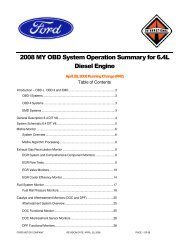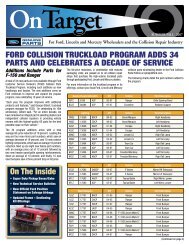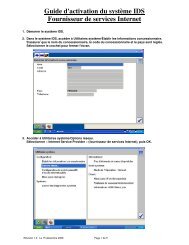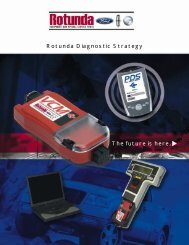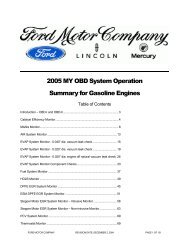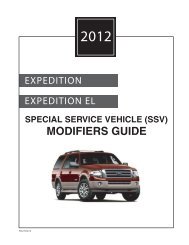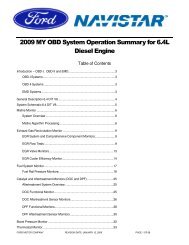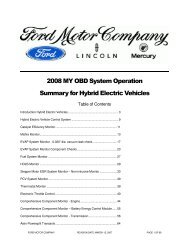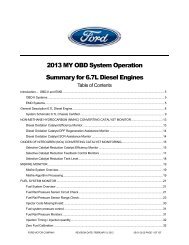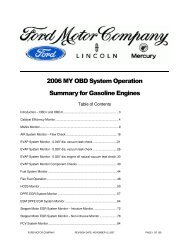2002 MY OBD-II System Operation Summary - MotorCraftService.com
2002 MY OBD-II System Operation Summary - MotorCraftService.com
2002 MY OBD-II System Operation Summary - MotorCraftService.com
You also want an ePaper? Increase the reach of your titles
YUMPU automatically turns print PDFs into web optimized ePapers that Google loves.
Typical 0.020” EVAP abort (fuel slosh) conditions for Phase 2:Change in load: > 20% for 0.040”Change in load: > 10% for 0.020”Change in tank pressure: > 1 “ H 2 O for 0.040”Change in tank pressure: > 1 “ H 2 O for 0.020”Change in fuel fill level: > 15% for 0.040”Change in fuel fill level: > 8% for 0.020”Number of aborts: > 20 (may be up to 255)Typical 0.020 EVAP monitor malfunction thresholds:P1450 (Excessive vacuum): < -8.0 in H 2 O over a 30 second evaluation time.P0455 (Gross leak): > -8.0 in H 2 O over a 30 second evaluation time.P0457 (Gross leak, cap off): > -8.0 in H 2 O over a 30 second evaluation time after a refueling event.P1443 (Gross leak, no flow): > -8.0 in H 2 O over a 30 second evaluation time with < 0.02 lb/min vapor flow.P0442 (0.040” leak): > 2.5 in H 2 O bleed-up over a 15 sec. evaluation time at 75% fuel fill.(Note: bleed-up and evaluation times vary as a function of fuel fill level).P0456 (0.020” leak): > 2.5 in H 2 O bleed-up over a 30 sec. evaluation time at 75% fuel fill.(Note: bleed-up and evaluation times vary as a function of fuel fill level)P0442 vapor generation limit: < 2.5 in H 2 O over a 100 second evaluation time.FORD MOTOR COMPANY REVISION DATE: OCTOBER 02, 2001 PAGE 20 OF 66



